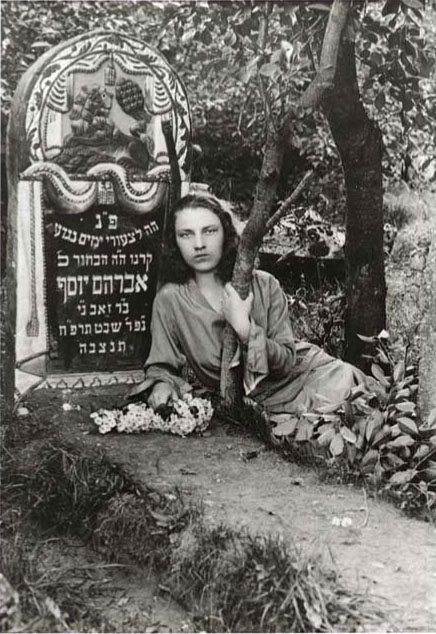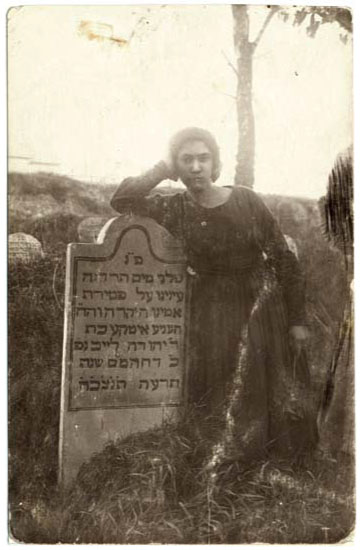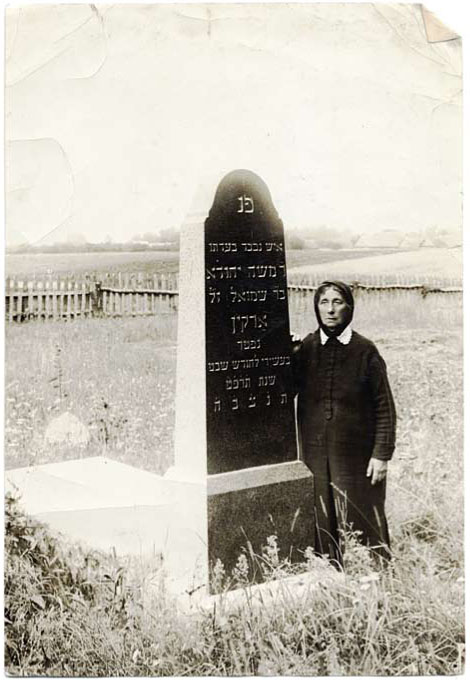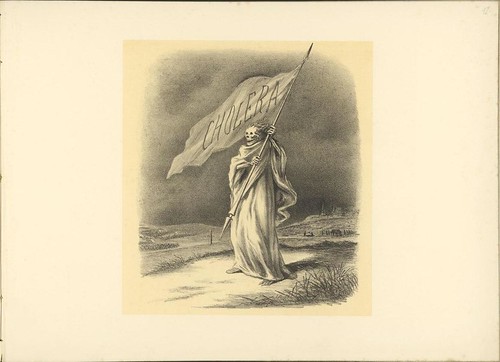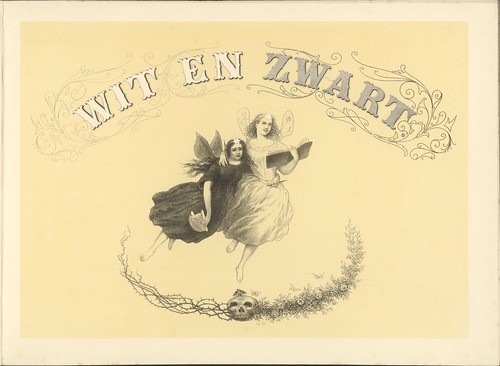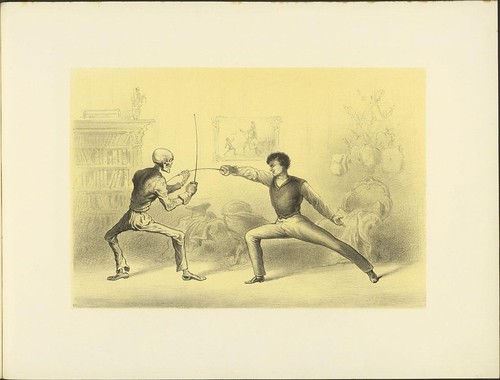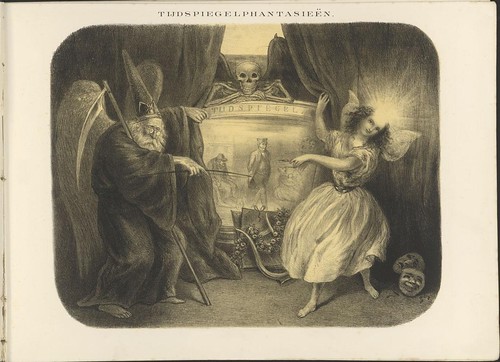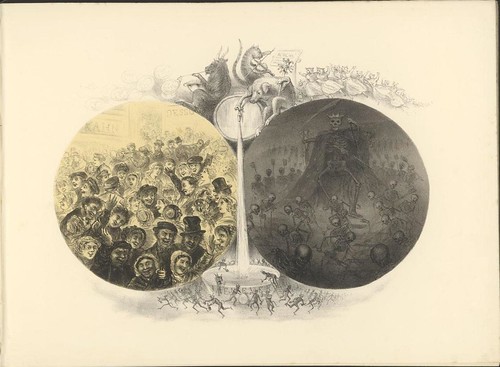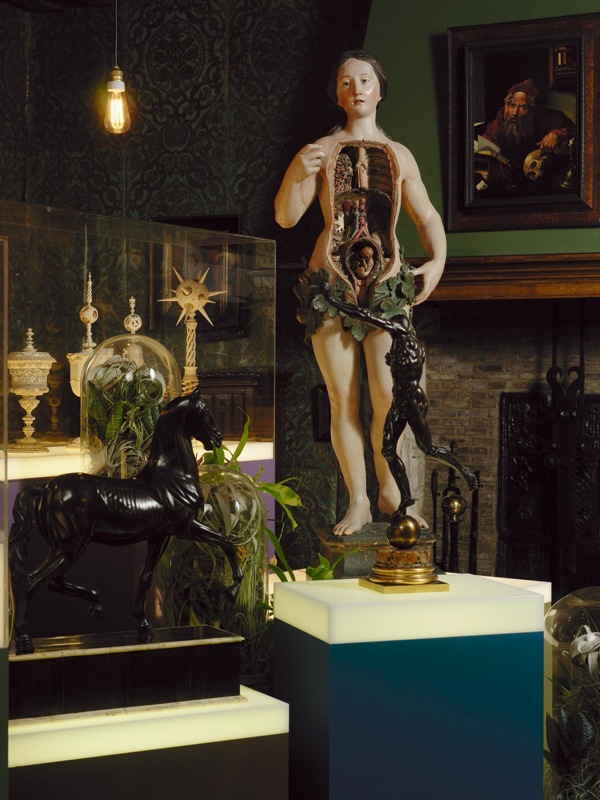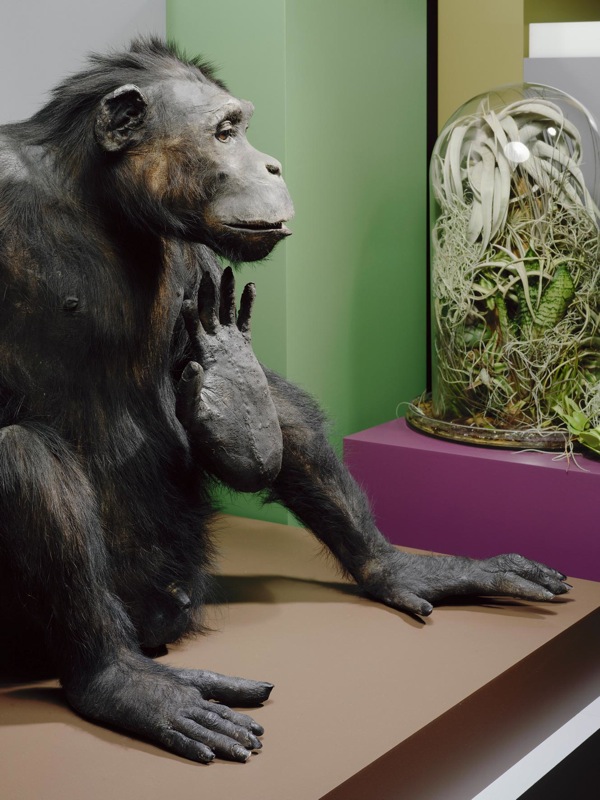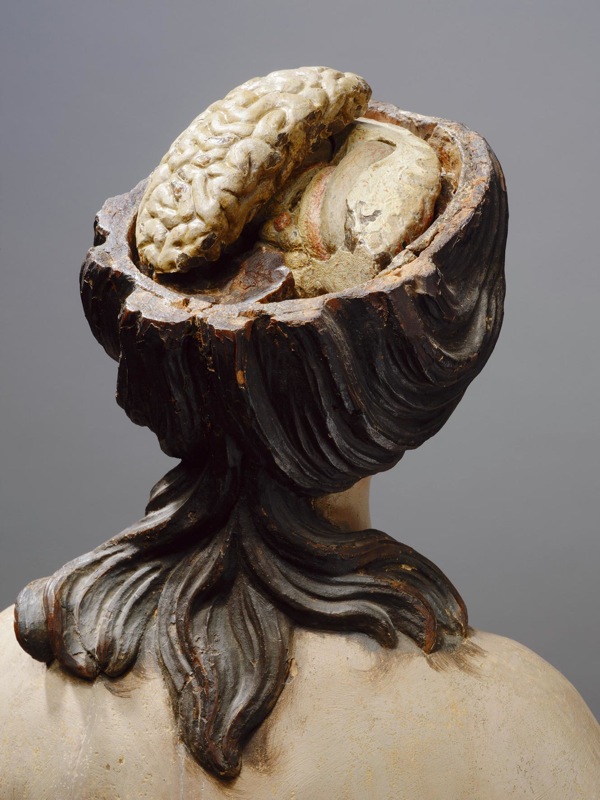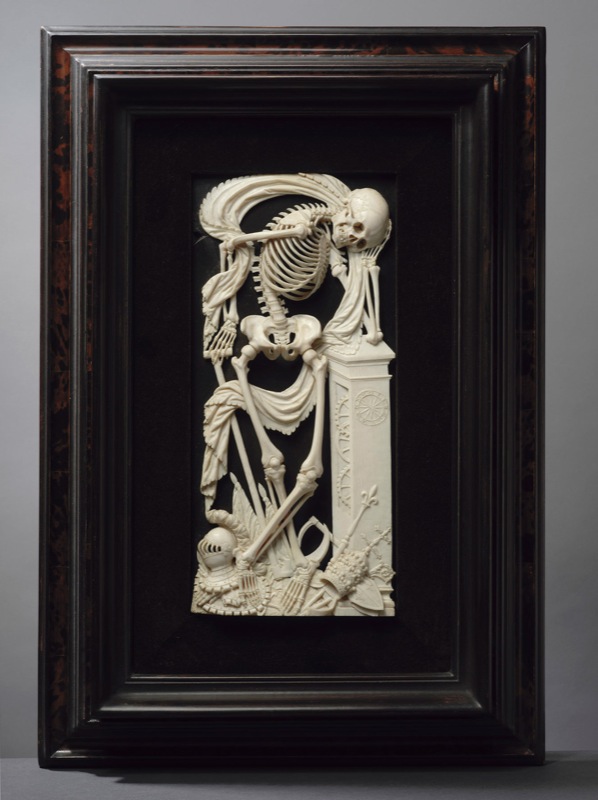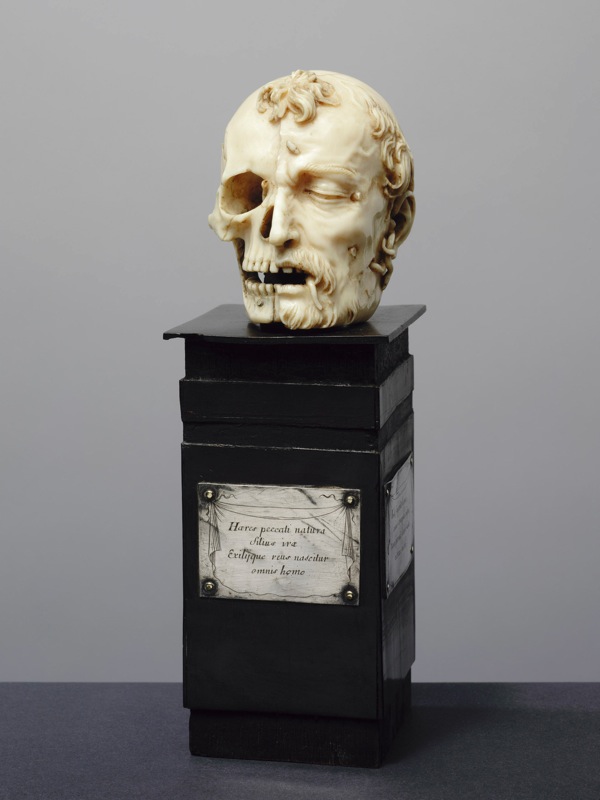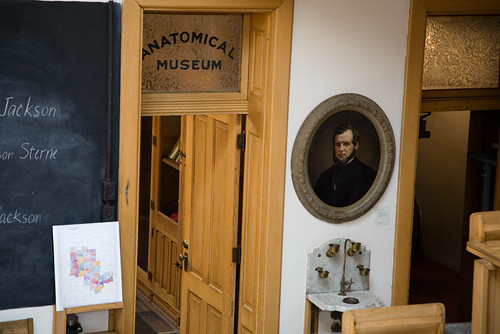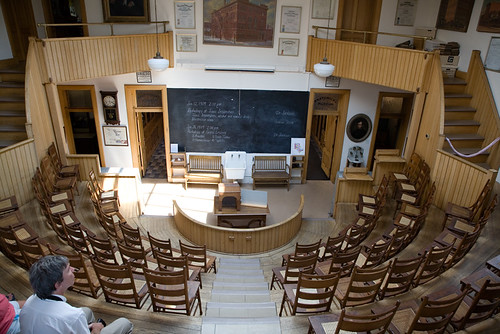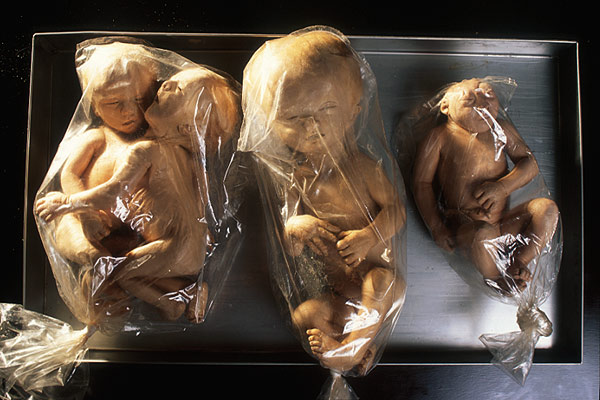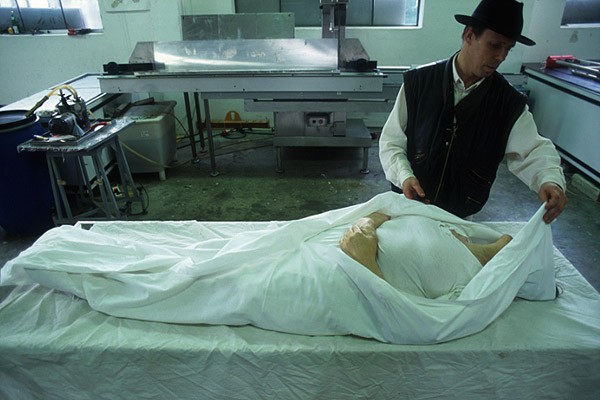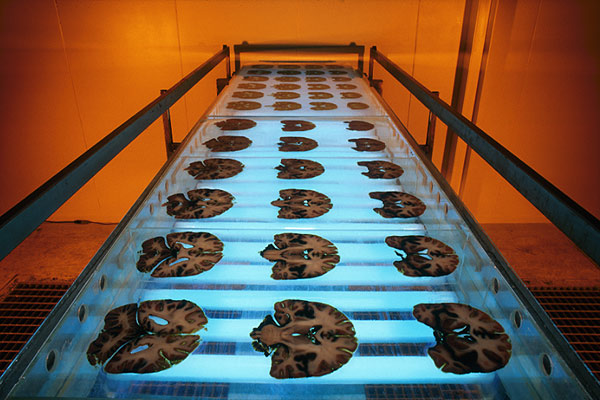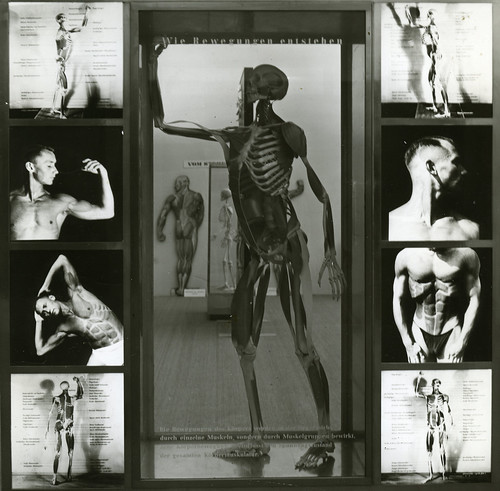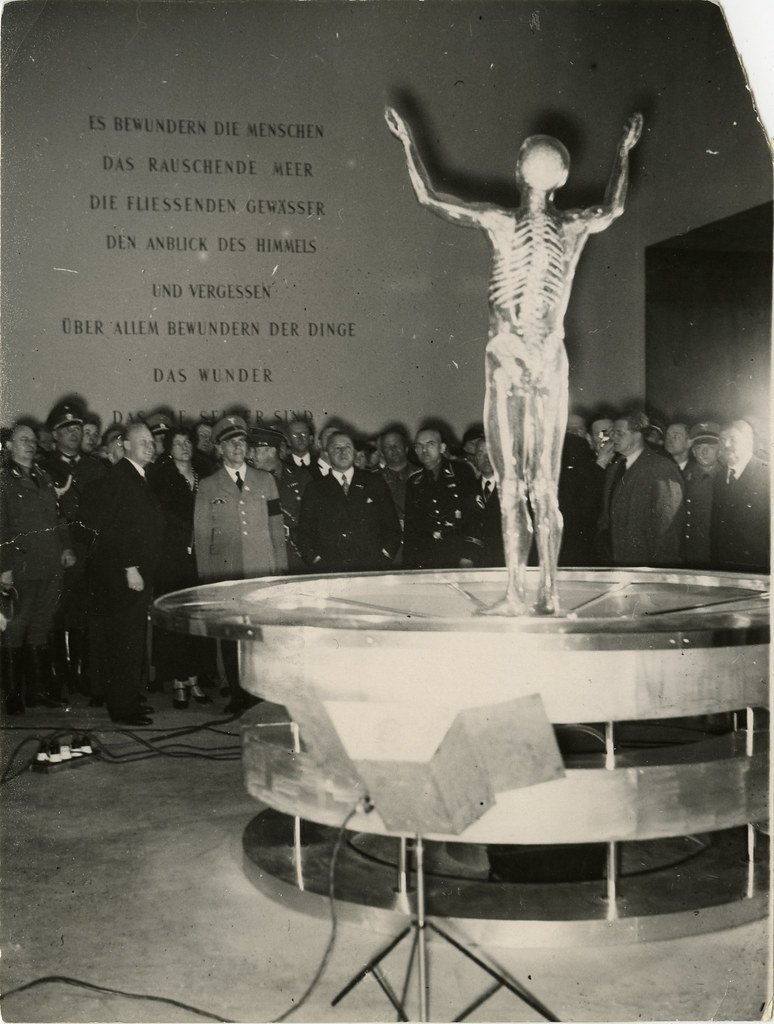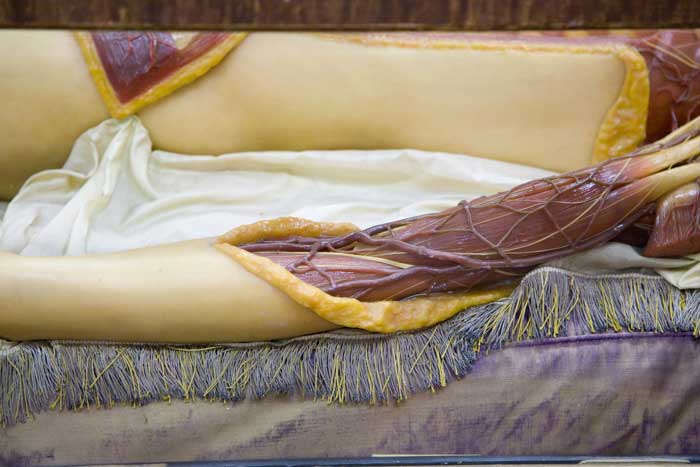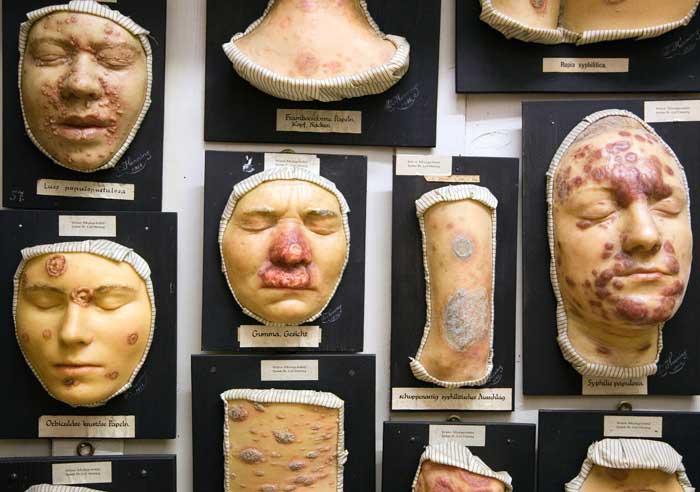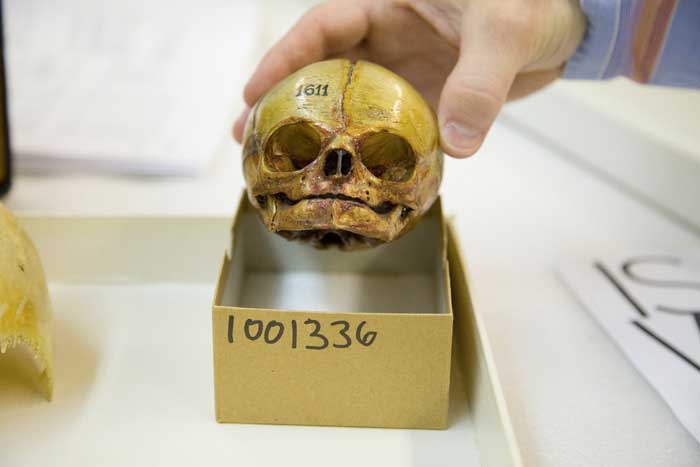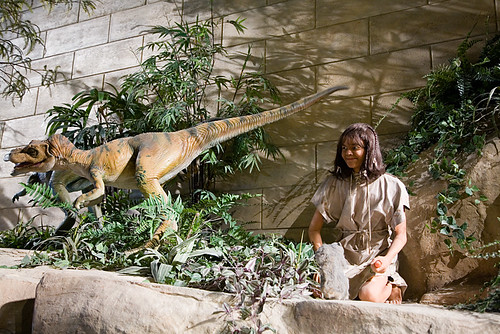
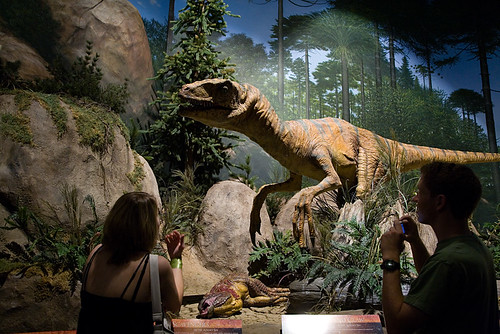
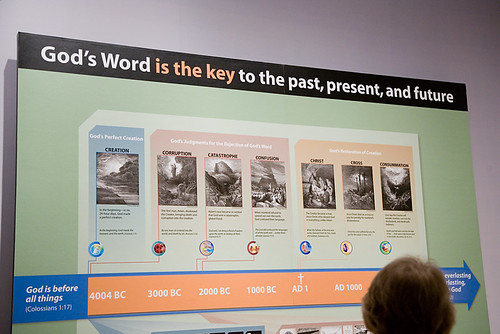
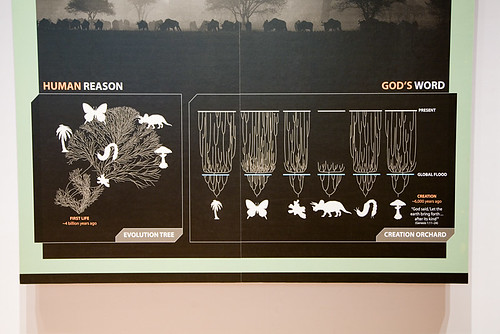
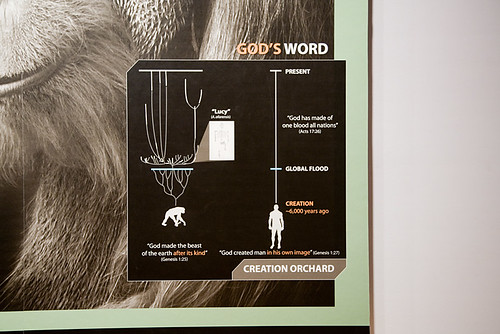
On my recent roadtrip, my boyfriend and I happened upon a billboard for
The Creation Museum (while on our way to the equally spectacular
Breyerfest and the wonderful
Roadside America). It was not on our itinerary, but we agreed that we'd be crazy not to go. It was well worth the stop; it was an amazing, if angering and perplexing, spectacle, well worth the $28 dollar admission.
The Creation Museum is the $33 Million showcase of a Christian Evangelical group called
Answers in Genesis, an organization run by
Ken Ham, who holds a degree in applied science from the University of Queensland in Australia. The museum is, in effect, an alternative natural history museum, complete with large-scale animatronic dinosaurs and living animals, that uses the visual language of the natural history museum to debunk the teachings of natural history. I think of it as a visual essay attempting to reconcile biblical literalism with science. A tricky thing, and, in my opinion, a real failure.
Here is how the the museum website describes the museum:
The Creation Museum presents a 'walk through history.' Designed by a former Universal Studios exhibit director, this state-of-the-art 70,000 square foot museum brings the pages of the Bible to life. A fully engaging, sensory experience for guests. Murals and realistic scenery, computer-generated visual effects, over fifty exotic animals, life-sized people and dinosaur animatronics, and a special-effects theater complete with misty sea breezes and rumbling seats. These are just some of the impressive exhibits that everyone in your family will enjoy.
Here is how one of my favorite authors
Stephen Asma describes it, in his recent article
"Trapped in the Creation Museum:" In many ways, it's not quite accurate to call this center a museum at all. It contains almost no factual information, unless you count speculations on how Noah kept dinosaurs on the ark as information. It offers no new observations about nature, unless inferring the existence of a Designer can be called observational. And, unlike most nature museums, it has no research component. But perhaps the main problem with the museum is that it implicitly endorses the terms of debate set up by creationists--that it is God and goodness vs. Darwin and evil.
But see for yourself! If you have the opportunity, I very highly recommend you visit the museum in person--It really must be seen to be believed. If you'd like to pay a a virtual visit, I have documented much of the signage and most of the exhibits on my
Flickr page. For more information, check out
Asma's article in its entirety.
